Applications | Pharmacology and Toxicology
Pharmacology and Toxicology
Discover altered metabolic pathways during drug development and clinical trial assessments.

Used By







Featured Pharmacology Resources

Metabolomics in Pharmacology and Toxicology
Accurate assessment of drugs’ mechanism of action and adverse effects is a critical part of the drug discovery and development process. A large number of drugs fail, often after they’ve reached clinical trials, due to ineffective efficacy and toxicity assessment. Additionally, failure to identify the patient for which a drug works is responsible for a large number of drugs that fail or show less efficacy than expected in clinical trials, a challenge that can be addressed by characterizing patient-specific mode of action and adverse effects.
Metabolomics is playing a growing role in pharmacology and toxicology to increase the likelihood of advancing drugs through clinical trials. It can be used to predict efficacy and/or toxicity of a drug based on mathematical models of pre-intervention metabolite signatures as well as facilitate an improved understanding of a drug’s mechanism of action and ability to predict its impact on patients by combining metabolic profiles pre-treatment and over time during treatment.
To further support the understanding of drug-metabolite interactions that can help assess a drug’s efficacy, toxicity, and safety, an atlas of the associations between commonly prescribed drugs and 150 plasma metabolites has been constructed. This atlas has already been used to discover and validate a variety of disease-metabolite associations and treatment effects, demonstrating the utility of metabolomics data in advancing pharmacology and toxicology assessments in drug discovery and development.

Uncover Functional, Actionable Insights with Metabolomics
A better understanding of the way drugs work and their potential toxic side effects is needed much earlier in the drug development process. Metabolon can provide the insight needed to characterize drugs’ mechanisms of action and identify toxic effects early. Global metabolomics can provide high-level insight while targeted metabolomics can drill down into specifics, enabling researchers to select the best therapeutic candidates and design improved clinical trials to help reduce the rate of drug failures.
Prediction of Biologics-Induced Toxicity
Metabolomics can help determine the toxicity of biologics, which are not typically cross-reactive to species other than the humans for which they were developed, limiting the use of animal models for accurately assessing toxicity. Researchers combined metabolomics and mechanistic toxicity data from a biomimetic human liver microphysiology system model (the Liver Acinus MicroPhysiology System; LAMPS) to characterize the mechanisms of drug-induced liver injury for two biologics, tocilizumab and GGF2. Using these data, they then evaluated the ability of the quantitative systems toxicology model BIOLOGXsym™ to predict drug-induced liver injury. Their results demonstrate that this model could be a promising tool for assessing liver toxicity and safety of novel biologics before they advance to clinical trials.
Beaudoin, J.J., Clemens, L., Miedel, M.T., et al. The Combination of a Human Biomimetic Liver Microphysiology System with BIOLOGXsym, a Quantitative Systems Toxicology (QST) Modeling Platform for Macromolecules, Provides Mechanistic Understanding of Tocilizumab- and GGF2-Induced Liver Injury. Int J Mol Sci 24, 11 (2023). doi: https://doi.org/10.3390/ijms24119692
Preclinical Patient Risk Stratification
Metabolomics can identify patient metabolomes that are predictive of treatment response, informing improved treatment approaches. In a study published in Blood Advances, researchers used untargeted metabolomics followed by targeted metabolomics validation assays to identify key pre-treatment host metabolites that could predict whether patients would experience cytokine release syndrome or neurotoxicity syndrome after receiving anti-CD19 CAR T-cell therapy. This study clearly identified pre-treatment metabolomes that could stratify patients by their risk for serious side effects, suggesting that implementation of a similar strategy clinically could help ensure appropriate patient-treatment protocols.
Jalota A, Hershberger CE, Patel MS, et al. Host metabolome predicts the severity and onset of acute toxicities induced by CAR T-cell therapy. Blood Adv. 2023;7(17):4690-4700. doi: 10.1182/bloodadvances.2022007456
Development of Novel Drugs
Metabolomics is a powerful tool for identifying and validating novel targets in drug discovery. For example, very few drugs target cancer metabolism, despite the fact that altered metabolic pathways are hallmarks of cancer. In a study published in Nature Medicine, researchers leveraged metabolomics in preclinical development of a new small molecule cancer therapeutic, V-9302. V-9302 selectively targets the amino acid transporter ASCT2 to inhibit transportation of glutamine, an amino acid critical for biosynthesis, cell signaling, and other metabolic processes in cancer cells. The researchers demonstrated the V-9302 attenuated cancer cell growth and proliferation, increased cell death, and increased oxidative stress. It is the first study to describe an ihibitor of glutamine transport in cancer research and lays the foundation for additional studies that could introduce a new class of targeted therapies.
Schulte ML, Fu A, Zhao P, et al. Pharmacological blockade of ASCT2-dependent glutamine transport leads to antitumor efficacy in preclinical models. Nat Med. 2018;24(2):194-202. doi: 10.1038/nm.4464




Metabolomics Applications for Lung Function and Disease Research
- EUnderstand drug mechanism of action
- EPersonalized medicine research
- EPrecision medicine research
- EPatient stratification
- EUnderstanding off-target effects
- EDrug repurposing
- EDrug safety testing
- ETreatment risk prediction
- ELong-term risk prediction
“Mapping these unexplored drug–metabolite associations is crucial for pharmaco-epidemiological research and practice, as it may open new avenues to improve drug efficacy, enable repurposing of drugs and improve our understanding of the off-target effects of drugs occurring in the individual patient.”
Liu, J., Lahousse, L., Nivard, M.G. et al.
Integration of epidemiologic, pharmacologic, genetic and gut microbiome data in a drug–metabolite atlas. Nat Med 26, 1 (2020). https://doi.org/10.1038/s41591-019-0722-x
Confirming Mode of Action of a Fatty Acid Synthase (FASN) Inhibitor in Combination and as a Monotherapy for Multiple Cancers
Fatty acid synthase (FASN) is overexpressed by a variety of solid and hematopoietic tumors, including non-small cell lung, breast, ovarian, prostrate, colon, pancreatic cancers, and lymphoma, and cancer stage-dependent increases in FASN are inversely correlated with survival. Although studies have shown that inhibiting FASN can restore sensitivity to many therapeutics as well as induce tumor cell apoptosis and inhibit mouse xenograft tumor growth, FASN inhibitors are largely unstudied in clinical trials. In 2021, the first human FASN inhibitor to enter clinical studies—TVB-2640—underwent a Phase I clinical trial to determine its dose-limiting toxicity and maximum tolerated dose (MTD), elucidate its safety profile, and examine its pharmacokinetics. Metabolomics analysis played an important role in determining the mode of action of TVB-2640 (FASN inhibition), which was found to be well tolerated and effective against multiple cancers.
The research group used Metabolon’s Sebum Targeted Panel to profile five classes of lipids in the sebaceous secretions of patients receiving TVB-2640. Serum levels of malonyl carnitine (MC; a metabolites of the FASN substrate malonyl CoA) and tripalmitin (a surrogate for palmitate, a product of FASN) in patients treated with TVB-2640 as a monotherapy and in combination with paclitaxel revealed effective inhibition of FASN activity, confirming the mechanism of action of TVB-2540. Targeted metabolomics profiling of lipids in sebaceous samples additionally revealed significant inhibition of sebum triglyceride production. Together, these results demonstrated effective and potent inhibition of the de novo lipogenesis pathway by TVB-2640, both alone and in combination with paclitaxel.

Figure 1. A) Model of FASN pathway activity. B) MC levels in patient sera (relative levels of MC are shown from Metabolon data; n = 49 pts in 3 runs, with all samples from a given patient assayed on the same run). C) Tripalmitin levels in patient sera (n = 49). D) Effect of TVB-2640 on sebum triglyceride levels and E) Effect of TVB-2640 on sebum sapienic acid levels. Relative levels of MC are shown from Metabolon data. E) Effect of TVB-2640 on sebum sapienic acid levels. For D) and E), fold change is the relative change in analyte of interest at the on-treatment timepoint indicated compared to baseline (C1D1), for monotherapy or combination treatment. The graphs show the measured results and the fold change is a calculation based on the median values.
This study described the first in-human clinical investigation of the FASN inhibitor TVB-2640, both as a monotherapy and in combination, against a variety of tumor types. Metabolon helped investigators confirm the extremely robust mode of action of TVB-2640. Combined with other analyses demonstrating a predictable and manageable safety profile, these data suggest that TVB-2640 is a promising candidate for treating ovarian cancer, breast cancer, and KRAS mutant non-small cell lung cancer. Additional, larger-scale clinical trials can solidify TVB-2640 as an oral FASN inhibitor for the effective treatment of several solid tumors including ovarian, breast, and NSCLC.
Falchook G, Infante J, Arkenau H, et al. First-in-human study of the safety, pharmacokinetics, and
pharmacodynamics of first-in-class fatty acid synthase inhibitor TVB2640 alone and with a taxane in advanced tumors. EClinicalMedicine. 34 (2021) 100797. doi: https://doi.org/10.1016/j.eclinm.2021.100797
Pharmacology and Toxicology Publications and Citations
Metabolon has contributed extensively to publications ranging from basic research to clinical trials.
Pharmacology and Toxicology Knowledge Base
Dive deeper by viewing our case studies and webinars. Learn more about how Metabolon furthers pharmacology and toxicology research and check back for more to stay up to date on the latest developments in metabolomics in pharmacology and toxicology.
Contact Us
Talk with an expert
Request a quote for our services, get more information on sample types and handling procedures, request a letter of support, or submit a question about how metabolomics can advance your research.
Corporate Headquarters
617 Davis Drive, Suite 100
Morrisville, NC 27560
Mailing Address:
P.O. Box 110407
Research Triangle Park, NC 27709

